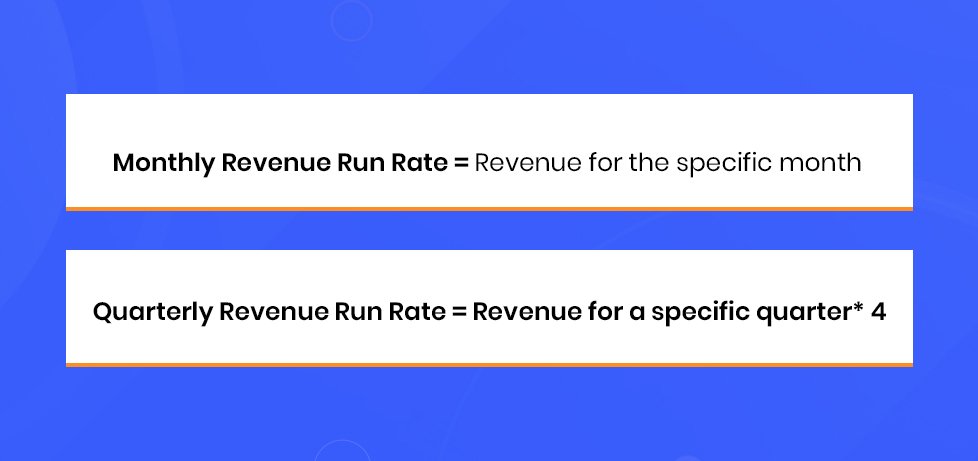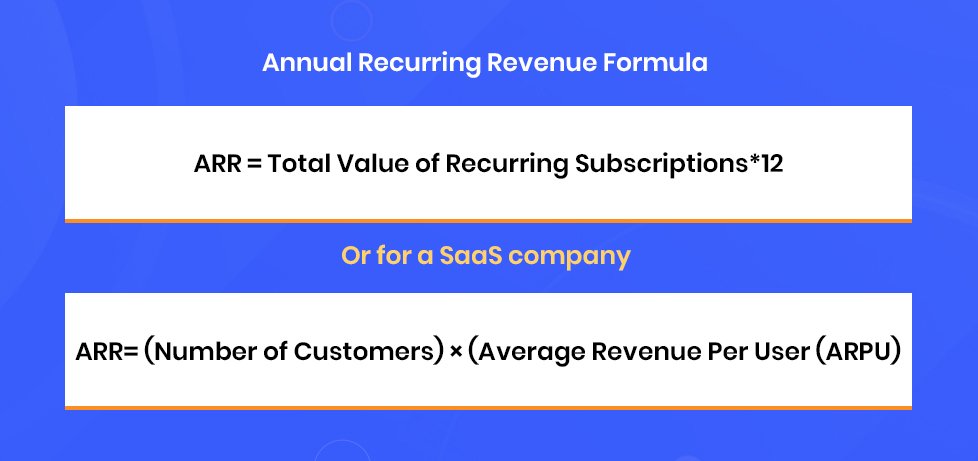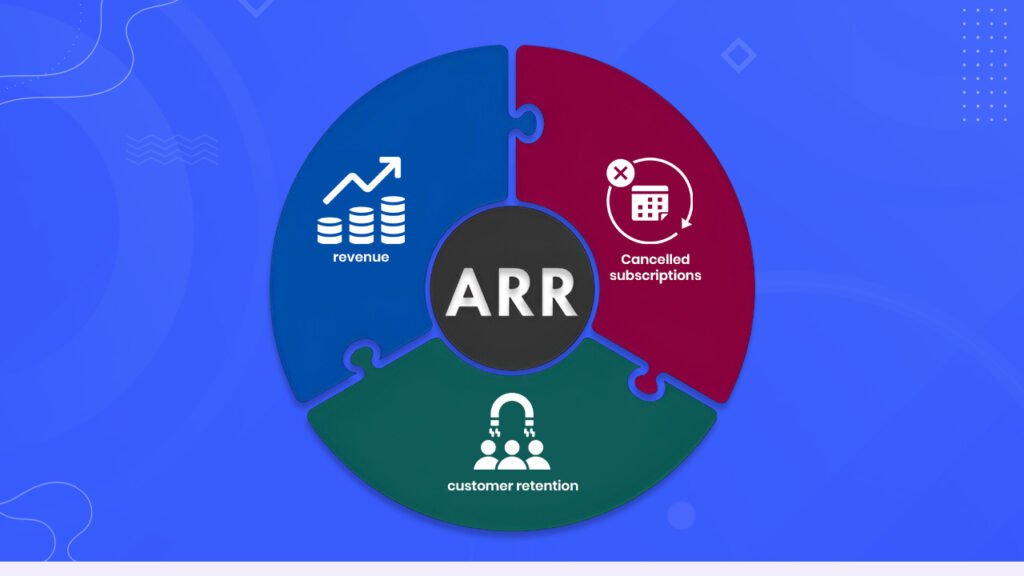Revenue is the nutrient of a business. Just as the nutrients push energy into the body; the revenue stream into the business is the key to sustenance and growth. The Revenue Run Rate (RRR) and Annual Recurring Revenue (ARR) are the proteins of a business body, building financial strength and ensuring a steady and predictable income for the business to grow and expand.
The run rates are the financial performance indicators that are crucial for providing and forecasting the company’s performance. Revenue Run Rate (RRR) and Annual Recurring Revenue (ARR) calculate the business’s revenue over a year. These are though simple but essential calculations to predict the annual performance.
The calculation and analysis of revenue run rate and annual recurring revenue are key tools for startups, existing business and subscription-based companies, for making the right financial decisions based on the results. In this blog below, we will talk about definitions of Revenue Run Rate and Annual Recurring Revenue, how to calculate them, the benefits of each metric, and their use in business strategy and decision-making.
Revenue Run Rate (RRR)

The RRR is a type of financial metric that calculates the company’s annual revenue based on the current revenue performance over a shorter time-period (month or quarter). It is calculated by extrapolating the specific period and assuming that the business will continue to generate revenue at the same rate for the rest of the year.
Formula for RRR

There are two ways to calculate the Revenue Run Rate: monthly or quarterly.
Revenue Run Rate = Revenue for the specific periods * number of days in the period
Monthly Revenue Run Rate (MRRR) formula:
Monthly Revenue Run Rate = Revenue for the specific month
Quarterly Revenue Rate (QRRR) formula:
Quarterly Revenue Run Rate = Revenue for a specific quarter* 4
For Example, if the company is generating ₹50000 in revenue in January, then its
MRRR = ₹50,000 / 1 month = ₹50000
If the company has generated recurring revenue of ₹23000 in a quarter, then the
QRRR will be: 23000*4 = 92000
Benefits of Revenue Run Rate
- Gives Quick Financial Projection and Assessment
Calculating the RRR is a quick way to get an estimate of annual revenue on short-term performance. This is an important metric for startups and investors to catch up with the trends quickly and plan on the insights.
- Simplifies Forecasting
Based on the monthly, quarterly, and annual revenue run rates, it is simple to estimate the yearly performance on the limited data.
- Investor and Stakeholder Confidence
The RRR gives a clear picture to the investor. A high revenue run rate will keep the investors engaged. This measurement is especially beneficial for new startups with limited financial history.
- Operational Planning
RRR assists in budgeting, hiring, inventory management, and most essential resource allocation for companies.
- Helps Identify Growth Trends
Tracking RRR over different periods helps businesses identify the revenue performance, whether it is growing, stagnating, or declining, and measure expansion and scalability accordingly.
Limitations of Revenue Run Rate

- It does not Account for Seasonality: The monthly churn rates can vary by quite a wide margin seasonally. The RRR for a single month does not accurately reflect the sales and profitability figures. For example, a retail business of gifts might make most of its sales during the holiday season.
- Can lead to overestimation and underestimation because of temporary sales spikes or product launches, slow sales, new competition, etc.
- Does not take into account the market changes, such as economic downfalls, operational challenges, etc., that impact the revenue run rate making it less reliable in volatile markets. RRR assumes constant growth with no account of fluctuations.
Annual Recurring Revenue (ARR)

By definition, the Annual Recurring Revenue is a measure of predictable and recurring revenue that will be generated by a business annually. This key financial metric is used for subscription-based businesses. The calculation is based on the extrapolation of contracts and subscriptions and does not count one-time sales focusing on consistent revenue stream instead.
ARR is commonly used by SaaS companies, businesses that offer membership services, etc. It gives a clear insight into stable and predictable incomes in recurring revenue models.
Annual Recurring Revenue Formula
ARR = Total Value of Recurring Subscriptions*12
Or for a SaaS company
ARR= (Number of Customers) × (Average Revenue Per User (ARPU))
For example,
If a company has 1000 customers and each is paying ₹500 per month:
ARR = 1000x500x12= 60,00,000
Which means ₹60,00,000 will be the predictable yearly revenue.
Benefits of Annual Recuring Rates

- ARR Lends Predictability : The business to estimate future earnings and brings in more certainty by giving a clear picture of stable and recurring income and better long-term planning.
- A Strong ARR Indicates Stability: Business, making it attractive to investors and bringing in more funding with consistent revenue stream numbers. It also increases the trust of stakeholders and boosts the company’s valuation for funding and acquisition.
- ARR is a good tracker for revenue churn, expansion revenue, and renewal rates, and indicates customer loyalty to the brand.
- Annual Recurring Revenue measurement enables the business to allocate resources in different operations such as sales and marketing, R&D, etc. based on stable income.
- A good ARR increases scaling, upselling, and cross-selling opportunities.
Limitations of ARR

- Does not account for one time revenue such as consulting fees, one-time purchases, or hardware sales.
- Assumes zero churn or cancelled subscriptions.
- Is highly dependent on customer retention, i.e., the renewal rates of the subscriptions.
Key Differences Between Revenue Run Rate and ARR

| Feature | Revenue Run Rate | Annual Recurring Revenue |
| Suitable for | Startups, consultants, non-subscriptions-based businesses | SaaS, and other subscription-based businesses |
| Calculation basis | Extrapolated for short-term revenue period | Annual recurring subscriptions |
| Predictability | Less reliable as it does not consider fluctuation | Give reliable results because of a stable subscription base |
| One-time revenue inclusion | Includes one-time sales | Does not count one-time sales |
Importance of RRR and ARR for Businesses
Both, revenue run rate and annual recurring revenue, are necessary calculations for every business, from start-up to high-growth companies.
Here is how:
- Financial Planning: Run Rate and recurring revenue calculations act as a guide for the current and future financial health and help make decisions about budgeting, hiring, and expansion. Businesses can forecast future revenue, set realistic financial goals, etc.
- Growth Tracking: Both ARR and RRR are clear indications of revenue trends, snapshots of effective sales and marketing strategies, comparisons of performance in their sectors, identification of good trends, and areas which need improvement to improve the figures.
- Investor Attraction: A good ARR and RRR are used by investors to gauge the business’s potential for growth. High annual recurring revenue and revenue run rate also help give good projections in fundraising rounds.
- Project Future Savings: The ARR and RRR metrics indicate future saving trends and help determine the growth path. It can be adjusting pricing models, investing, or launching a new product, investing more in marketing, or enhancing customer retention strategies, or making capital improvements. A low RRR and ARR might indicate the need for cost-cutting measures such as minimizing expenses and boosting sales.
- Inventory Management: Understanding the ARR and RRR will help you understand the flow of products or services and manage the inventory better. It will ensure that you don’t overstock or run out of merchandise in case of demands.
When should you Use ARR and RRR Together?
The revenue run rate and annual recurring revenue figures can be instrumental in helping build your business and scale it to the heights that you envisioned.
Here are some scenarios when you should focus on ARR and RRR together:
- New businesses or Early-Stage Companies: RRR and ARR act as a financial tracker, and for a short period, it gives a near perfect insight into the financial performance. RRR indicates potential annual revenue, and ARR helps as subscriptions grow.
Also using RRR measurement for new companies gives the investors and venture capitalists the financial environment of the company.
- Established Businesses: revenue run rate and annual recurring revenue compared together indicate growth momentum and long-term revenue sustainability.
- Evaluating Changes: If you are planning a restructuring campaign with changes in the pricing structure, leadership, or thinking of launching a new product or service in your business, then the RRR can be the early indicator of the success of the changes. High RRR means the change is working, and a low RRR means a rollback is in the offing.
Conclusion
RRR and ARR do not account for churn rates, expansions, seasonality, and marketing change, and it might not be fully accurate, but it still remains the handiest tool for predicting the future growth of the company and planning scaling and expansion. Revenue Run Rate and Annual Recurring Revenue, when used wisely, can be instrumental in making informed financial and strategic decisions.
Read Also: EBITDA: Definition, Formula and Calculation. why it’s crucial for financial analysis?






